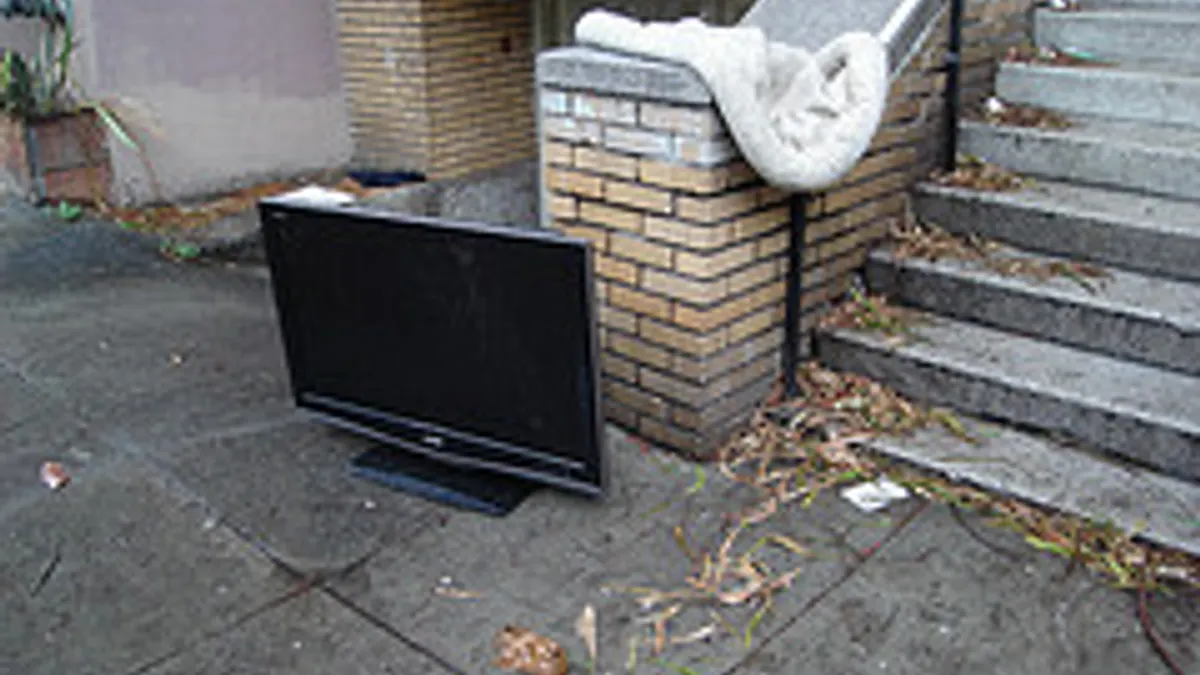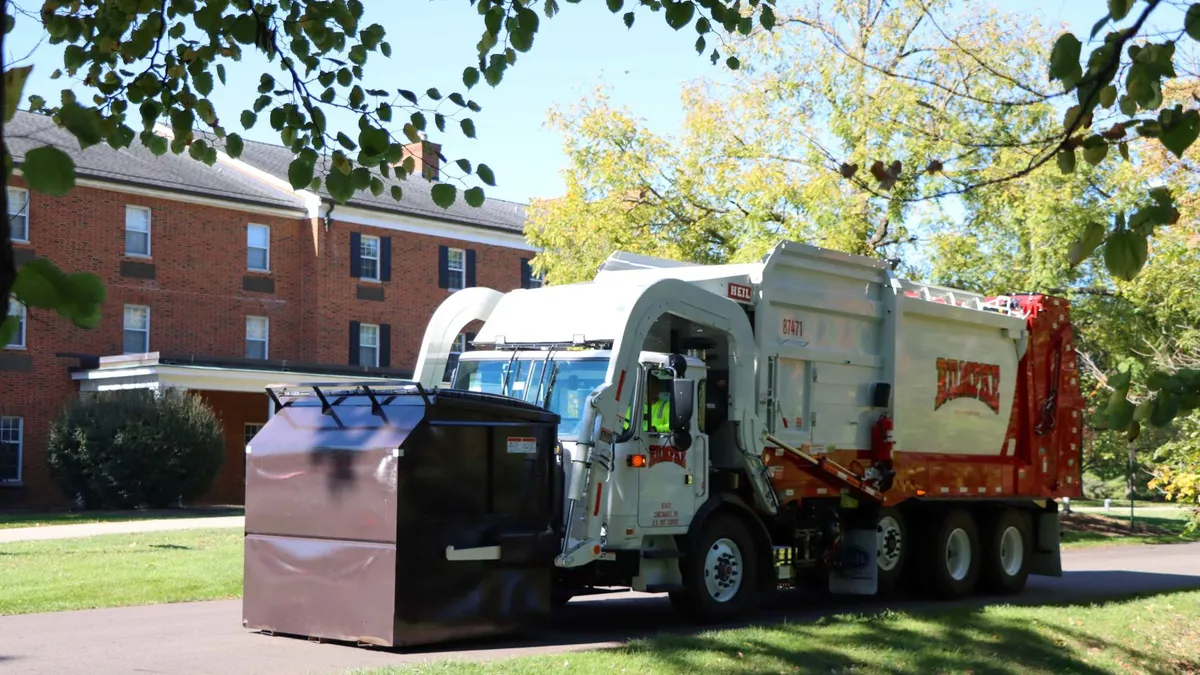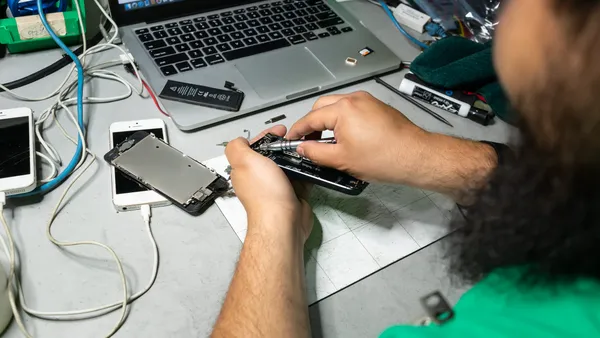Dive summary:
- Purdue University in Lafayette, Ind., is anticipating new technology to replace LCD flat screens by working preemptively to find a way to safely recycle flat screens before they start showing up in landfills.
- LCD TVs made before 2009 might contain cold cathode fluorescent lamps, which contain mercury, making them hazardous to throw out or to burn.
- The U.S. Environmental Protection Agency’s People, Prosperity and the Planet (P3) program is funding the research and hopes to find a cost effective and safe way to dispose of the millions of TVs which will soon be on their way out the door.
From the article:
Millions of flat-screen monitors and TV sets will soon be obsolete, posing environmental hazards if disposed of improperly. Purdue University researchers are therefore developing tools to help industry efficiently recycle the products.
Liquid crystal displays (LCDs) made before 2009 could have cold cathode fluorescent lamps, or CCFLs, to backlight the display. The CCFL displays contain mercury, which makes them hazardous to get rid of, or even to burn. ...













